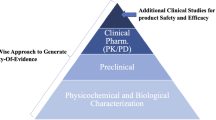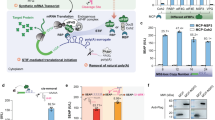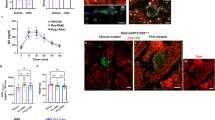Abstract
To develop an inducible expression system, the enhanced artificial nuclear receptors and target reporters were constructed. Artificial nuclear receptors were generated by fusing three domains, consisting of DNA-binding domain (DBD) of GAL4, ligand binding domain (LBD) of progesterone or estrogen receptor, and activation domain (AD) of VP16, sterol regulatory element binding protein (SREBP)-1a, or SREBP-2. The activation domain of SREBP-1a showed most potent transcriptional activity. The maximal level of target reporter gene expression was extremely elevated by the usage of ATP citrate-lyase (ACL) minimal promoter -60/+67 in place of artificial TATA promoter, while the SV40 enhancer severely increased the basal transcription in the absence of ligand. The induction system, developed in the present study, was applied to cell therapy, resulting in successful induction of single-chain insulin analogue (SIA) gene expression to correct the hyperglycemia in diabetic animals. By means of subcutaneous cell therapy, the SIA gene expression rapidly occurred after the local topical application of ligand. These results suggest that our system represents a powerful tool for transcriptional regulation of target gene that can be used for diverse applications, ranging from basic research to gene therapy.
Similar content being viewed by others
Article PDF
Author information
Authors and Affiliations
Rights and permissions
This is an Open Access article distributed under the terms of the Creative Commons Attribution Non-Commercial License (http://creativecommons.org/licenses/by-nc/3.0/) which permits unrestricted non-commercial use, distribution, and reproduction in any medium, provided the original work is properly cited.
About this article
Cite this article
Kim, JM., Kim, SJ., Lee, HC. et al. Development of ligand-dependent regulatory system and its application to gene therapy of insulin-dependent diabetes mellitus. Exp Mol Med 38, 385–392 (2006). https://doi.org/10.1038/emm.2006.45
Published:
Issue date:
DOI: https://doi.org/10.1038/emm.2006.45



